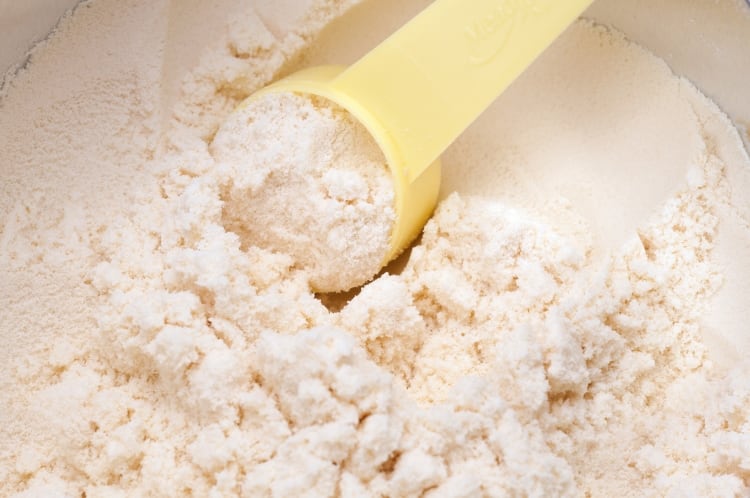The tolerable daily intake (TDI) set by the European Food Safety Authority (EFSA) would be exceeded if the test sample with the highest level of 3-MCPD is consumed as recommended on the product label.
The tests looked at heavy metals, phthalates, contaminants, microorganisms, energy, the amount of 34 nutrients, and a review of the accuracy of product labeling.
While some brands of infant formula can cost twice as much as others, the council’s test results showed the energy and the 33 nutrients contained in different models were roughly the same.
The Council said while parents might find the advertising claims of infant formula products irresistible, there is no significant difference in terms of nutrient contents.
It added the L-Carnitine content of one sample was nearly 40% below the declared value.
The Council has provided all test findings to the Centre for Food Safety (CFS) for follow-up.
3-MCPD detection
3-MCPD is identified as a contaminant.
In recent years, 3-MCPD, as 3-monochloro-1,2-propanodiol esters (3-MCPDE), and a genotoxic carcinogen called glycidol, expressed as gylcidyl esters (GE), were found in food such as palm oil and infant formula. They are formed during high-temperature refinement of vegetable fat. Studies also revealed that through hydrolysis of 3-MCPDE and GE in intestinal tracts, 3-MCPD and glycidol with toxicological properties would be released respectively.
Fifteen products were found to have 3-MCPD ranging from 13 to 120ug/kg. Taking a one-month old baby weighing 4.3kg as an example, the Provisional Maximum Tolerable Daily Intake (PMTDI) of 3-MCPD and 3-MCPDE set by JECFA is 17.2ug (independent or total) while the standard set by EFSA is more stringent with Tolerable Daily Intake (TDI) at only 8.6ug.
Using the model with the highest level of 3-MCPD as an example, the content is 120ug/kg. If an infant is fed according to the recommended amount on the label, a one-month-old infant would consume 106g of formula, with an intake of 3-MCPD exceeding the TDI of EFSA. For infants who are fed with infant formula only, the health risk is higher.
Breast milk is recognized internationally as the ideal source of nutrition for infants. However, some mothers cannot breastfeed for various reasons and infant formula has become the sole source of nutrition for their infants.
Therefore, the Council said it is vital to ensure the quality and safety of infant formula. It added that, at present, there is no specific regulation in Hong Kong to regulate the content of 3-MCPDE and GE in infant formula milk.
To enhance the safety of infant formula, the Council said the Government should closely monitor international developments, conduct timely reviews and consider introducing relevant food safety standards and regulations to the territory.
Among the 15 pre-packaged infant formulas tested, 13 were cow’s milk protein-based and two were isolated soy protein-based. The average cost per gram ranged from $0.31 to $0.59. The Council’s test results showed the overall safety, quality and nutritional content of the models were roughly the same, with an overall score from 3.5 points to 4.5 points. The brands with the lowest price ($250) and the highest price ($539) both scored 4 points.
Current regulations require infant formula products contain energy and 33 nutrients ("1+33") and 29 nutrients must be specified on the product label. The remaining four nutrients that are not mandatory to be listed include: linoleic acid, α-linolenic acid, myo-Inositol, L-Carnitine and DHA.
The test results showed although variations existed in the energy and 33 nutrient contents among different samples, they (including nutrients that are not required to be declared) all met the range specified by the regulations, and the ratio of DHA to total fat also met the ratio requirement of Codex (not exceeding 0.5% of the total fat content). Under normal consumption, all models should meet the related nutritional needs of healthy infants.
Nutrient labeling
In these tests, the actual nutrient content of each model was compared with the declared value as shown on the nutrition label.
Although the energy and nutrient content of all samples (including nutrients that do not need to be listed) fell within the range stipulated in the regulation, certain nutrients of six formulas were found to have discrepancies that exceeded the tolerance limit of “Technical Guidance Notes on Nutritional Composition and Nutrition Labelling of Infant Formula, Follow-up Formula and Prepackaged Food for Infants and Young Children” guidelines.
For example, in the formula with the highest price, the content of vitamin A measured was 21.9% lower than the declared value.
The label of another stated it contained 3,000ug of vitamin B3 per 100g, but the test result showed it had only 2,580ug, 14% lower than the declared value. In addition, the vitamin B3, iodine, selenium, copper, choline, myo-inositol, and L-Carnitine contents of one sample were all lower than the labeled values: -2.6% (vitamin B3), -13.9% (iodine), -14% (selenium), -11% (copper), -20.7% (choline), -5% (myo-inositol) and -39.5% (L-Carnitine).

